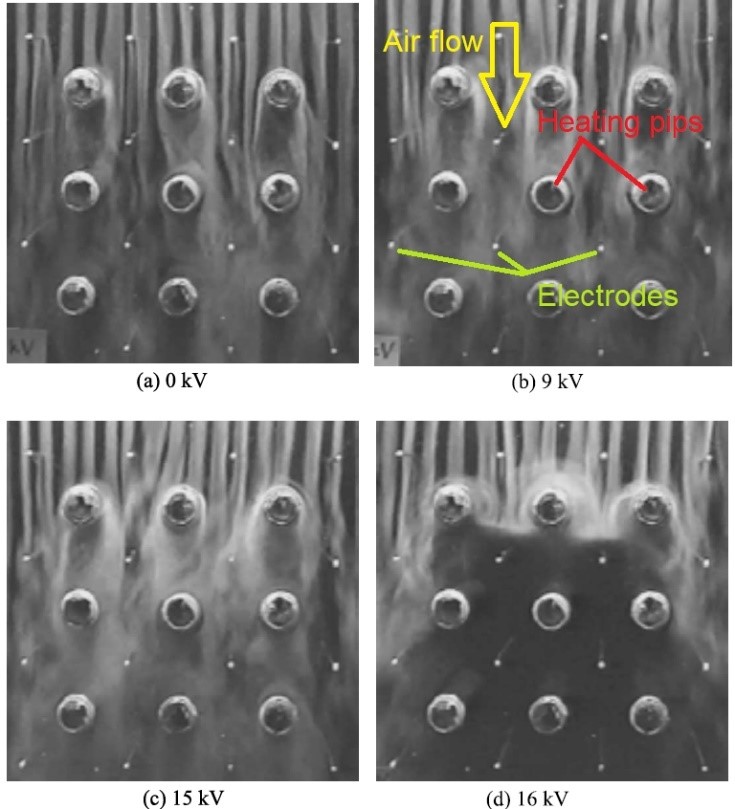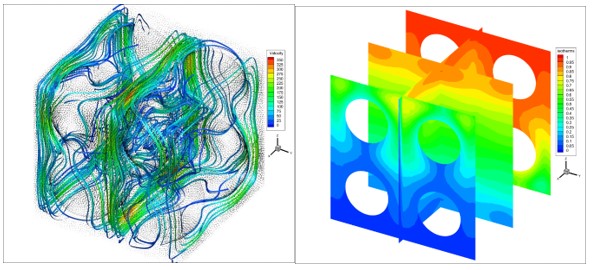What is Electromagnetic force?
Electromagnetic fields are a combination of invisible electric and magnetic fields of force that are mathematically described by Maxwell’s equations. They are generated by natural phenomena but also by human activities, mainly through the use of electricity.
From a safety point of view, dynamic Electromagnetic fields are often referred to as non-ionizing and ionizing radiation where the latter has the potential for cellular and DNA damage.
How does applying electromagnetic forces help us to overcome heat transfer problems?
Heat transfer is a fundamental process involved in various engineering applications, such as cooling of electronic devices, heat exchangers, and thermal management systems. Traditional heat transfer enhancement methods often involve modifying the geometry of heat transfer surfaces or altering the fluid properties. However, these conventional methods have limitations in achieving substantial improvements in heat transfer rates.
The approaches of heat transfer improvement generally include active and passive approaches. In the one hand, passive methods do not need any external power and usually utilize modified surfaces or the insertion of elements for turbulence promoters in the flow. On the other hand, in the active method, some external power input is needed to enhance the heat transfer rate. The active heat transfer enhancement includes mechanical stirring, surface vibration, fluid pulsation, and applied electric or magnetic fields. However, both approaches do not change the nature of the working fluid but produce chaotic convection.
The utilization of external electromagnetic fields provides an alternative approach for enhancing heat transfer by manipulating the thermal behaviour of the system.
So, it is well-known that fluid flow, thus convective heat transfer, could be influenced if the electrically conducting fluid is subjected to either magnetic, electric, or combined fields.
The application of external electromagnetic fields can influence heat transfer through several mechanisms. Some of the key mechanisms include:
- Electrohydrodynamics: The electric field induces fluid motion, enhancing convective heat transfer through increased mixing and promoting boundary layer disruption.
- Magnetohydrodynamics: The magnetic field affects the fluid flow characteristics by inducing Lorentz forces, resulting in improved convective heat transfer and suppressing flow instabilities.
- Electromagnetic radiation: Electromagnetic fields can modify the radiative heat transfer properties by altering the absorption, emission, and scattering of thermal radiation.
- Phase change enhancement: External fields can influence phase change processes, such as boiling and condensation, by altering bubble dynamics, film thickness, and interfacial phenomena, leading to improved heat transfer performance.
Real Applications
Recent research efforts have focused on exploring novel techniques and configurations to intensify heat transfer using external electromagnetic fields. Some notable advancements include:
- Electric fields for enhanced forced convection in microchannels, leading to improved cooling of electronic components.
- Magnetic fields for enhanced pool boiling heat transfer, promoting critical heat flux enhancement and boiling heat transfer coefficients.
- Combined electric and magnetic fields for convective heat transfer intensification in heat exchangers, providing superior performance compared to conventional methods.
- Electromagnetic field-assisted drying techniques for efficient and rapid removal of moisture from various materials.
Application of Electrohydrodynamic (EHD)
Applied electric energy in the form of the electric field is converted to the kinetic energy of fluid when the dielectric fluid interacts with the electric field. The enhancement in heat transfer was achieved due to an increase in the motion of fluid in the radial direction, leading to the disruption of the boundary layer. For example, the effect of the electric field on the air stream is shown in the below figure. In the 16kV case, one can see the corona wind due to the higher effect electric field so large that it even inverts the airflow intended to flow into the tube bundle.










